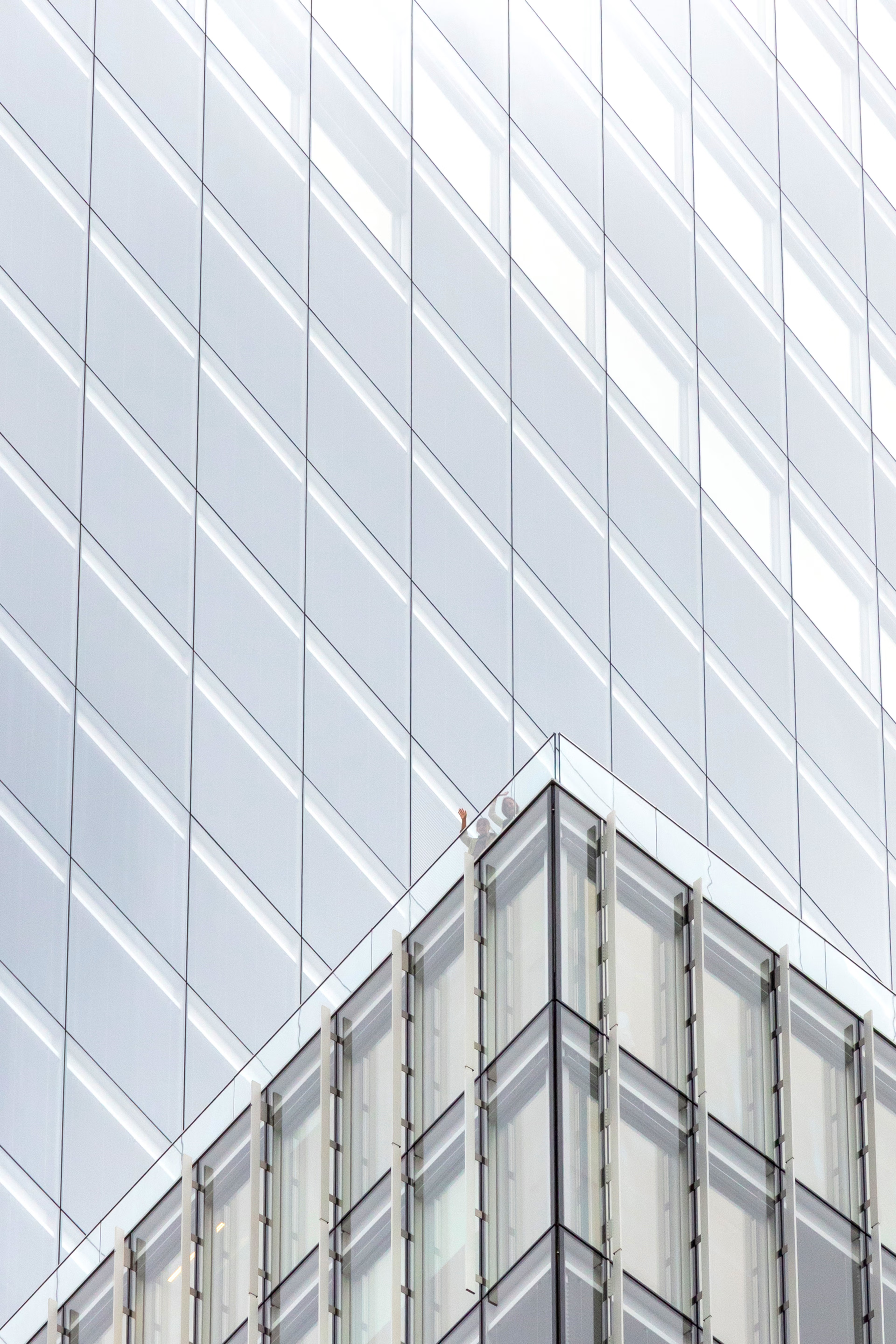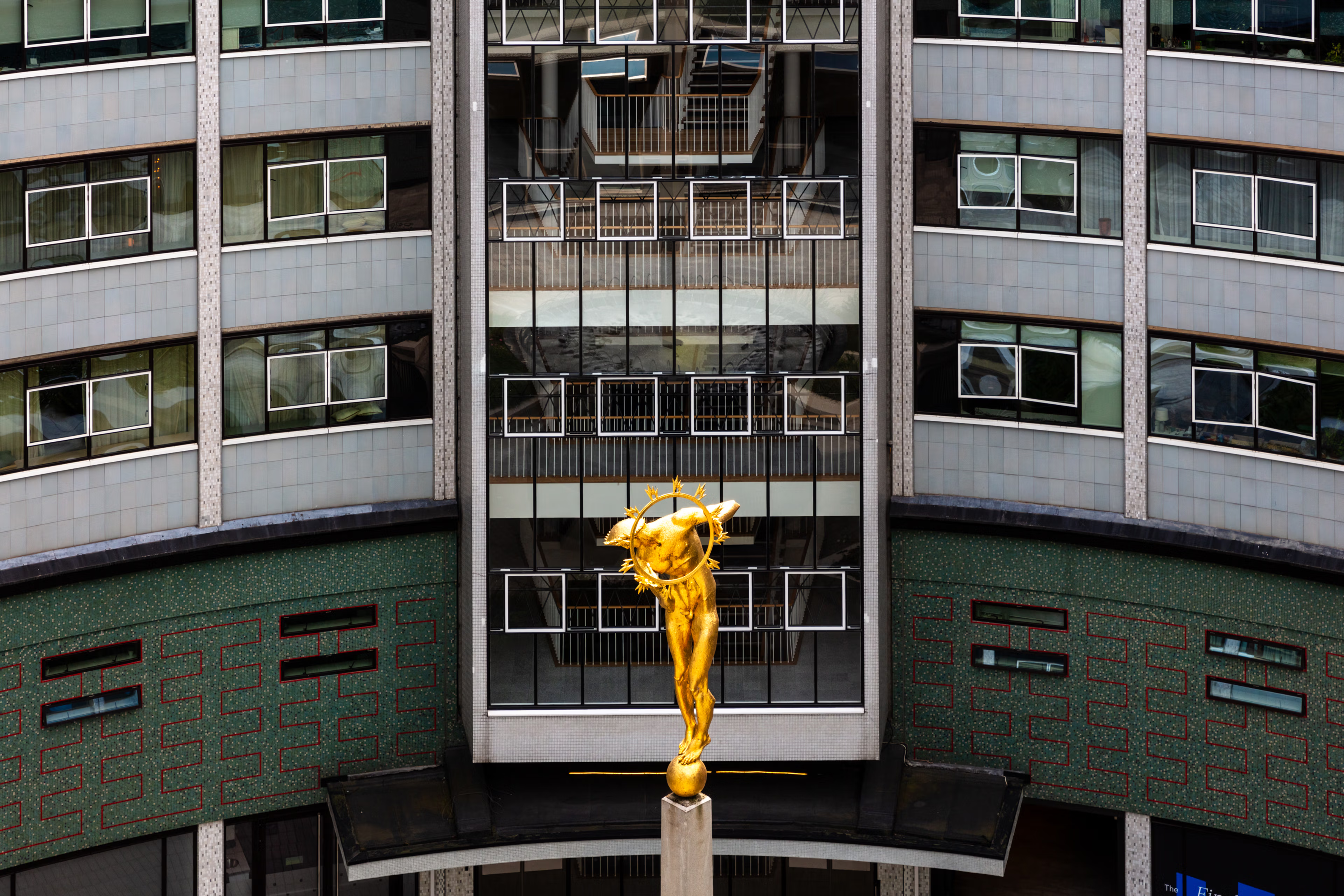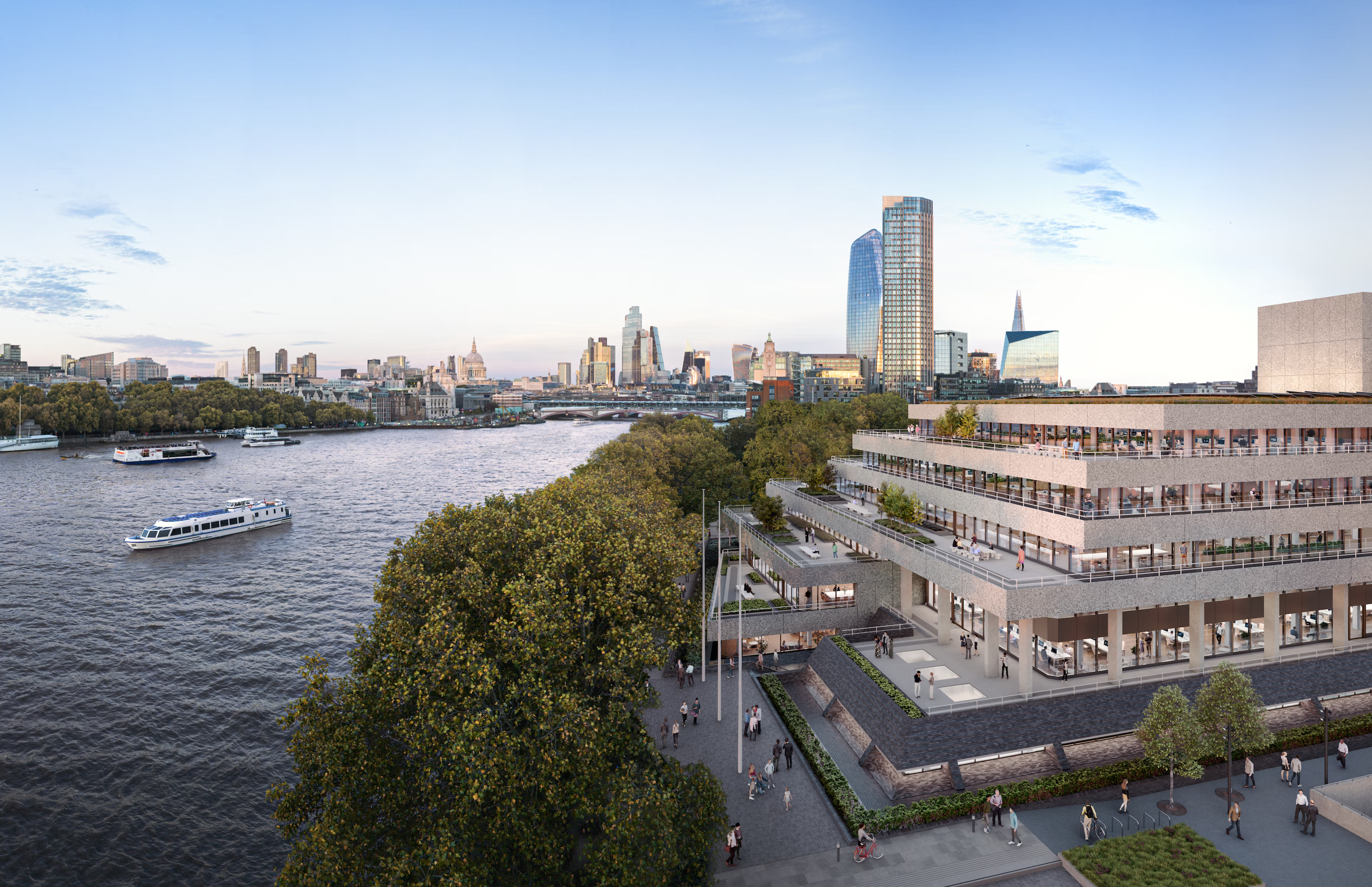Bloomberg London
Where hi-spec means low impact

When Bloomberg came to Stanhope to help oversee the development of its European HQ in London, sustainability was a defining principle from the outset. But a low ecological footprint doesn’t have to mean basic, or boring. The resulting building – sitting on a complex 3.2-acre site and offering over 1 million sq ft of innovative office space – is designed to turn heads and kickstart collaboration. Introducing one of the world’s most sustainable office buildings.

Where we started
In December 2010, Bloomberg embarked on the construction of a new building in the heart of the City of London. We were appointed to manage and coordinate the development of what would become an iconic project that pushes the boundaries of sustainable office design — setting new global standards.

What we did
How many lightbulbs does it take to change the world?
Bloomberg’s HQ is one of the best examples on the planet of using high-spec, sustainable materials to create a building with a low ecological footprint. Included in the building plans were integrated ceiling panels that would incorporate 500,000 LED lights, helping the Bloomberg teams to use 40% less energy than a typical office. On top of that, innovative water conservation systems were installed throughout the building, helping save up to 25 million litres of water each year. Meanwhile, a Derbyshire sandstone frame supports bespoke bronze fins that give the building a breathable membrane, aiding ventilation and shading.
Fuelling community and collaboration
Creating an incredible office environment for supporting Bloomberg’s 5,000+ London-based employees was just as important as the building’s green credentials. Sit-stand working areas and communal working stations foster conversation and collaboration among team members.
Knotty negotiations and ancient remains
While delivering over 1 million sq ft of office space for Bloomberg on a complex 3.2-acre site, we also had to negotiate strict regulations around the Bank Conservation Area. And what’s more, construction took place on the site of one of the most important finds from Roman Britain: the Temple of Mithras. The Museum of London Archaeology (MOLA) came on board to excavate the site fully – by hand! – between 2012 and 2014. Working with conservationists, artists and archaeologists, Bloomberg restored the Temple of Mithras close to the site of its discovery, 7m below modern street level (roughly street height in Roman times), and created a gallery space where visitors can spy a collection of Roman writing tablets and other fascinating artefacts.
A new way in
The project also saw us create a much-needed new entrance for Bank Station — part of TfL’s £600m revamp of Bank to streamline a notoriously knotty station experience.
What makes
this place great
Bloomberg’s HQ opened in 2017 and has since received a succession of awards, including the 2018 RIBA Stirling Prize for Architecture, the London Planning Award for ‘Best Mixed Use Scheme’, and BREEAM awards at an international level. Recognised as 'Outstanding' by BREEAM during its design and construction phases, the building has maintained this rating as a fully-functioning office, with its sustainable building management and operations recognised by the BREEAM In-Use assessment.






